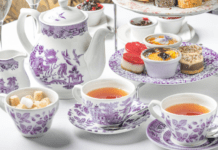 My three-year-old likes to play a game in which we make faces at each other. That’s pretty much the extent of the game. Sad faces, happy ones, silly ones. He likes the sad ones best – maybe they’re funnier to him? I hope that’s why – but he seems to like this simple game whatever faces we’re making. I assume that reading expressions and understanding how people are feeling are important aspects of development. And I appreciate that he can and does express emotions. His mother isn’t as great at expressing her emotions, at least not verbally. I’m somewhat better with words on physical or virtual paper than I am with saying them out loud.
My three-year-old likes to play a game in which we make faces at each other. That’s pretty much the extent of the game. Sad faces, happy ones, silly ones. He likes the sad ones best – maybe they’re funnier to him? I hope that’s why – but he seems to like this simple game whatever faces we’re making. I assume that reading expressions and understanding how people are feeling are important aspects of development. And I appreciate that he can and does express emotions. His mother isn’t as great at expressing her emotions, at least not verbally. I’m somewhat better with words on physical or virtual paper than I am with saying them out loud.
But I’m even more comfortable with expressing emotions when I’m using emojis.
You might say that I’m a big fan of the written word. Words have power. Words change the world. But words – beautiful, funny, powerful, and effective they may be – are also limited. Language barriers, knowledge gaps, and, perhaps worst of all, miscommunication in tone and intent can all leave something to be desired when it comes to paragraphs of text. Why use a $10 word when a 10 cent word will do? And why use any words at all when a picture will do the trick?
Love ‘em or hate ‘em, emojis have transformed the way we communicate. And I love them.
At first, I used emojis ironically. My family and I would text ridiculous emojis to each other, using them as silly punctuation for any conversation. What other purpose could these funny pictures serve than for sheer entertainment?
🥡🥌🗿🦠🥘
But after a while, the irony turned into genuine use. Like hashtags and Justin Bieber, I started loving them for real. What other form of communication says so much in such a small package?
Angry? 😡
Happy? 😊
Frustrated? 🤦🏼♀️
Embarrassed? 🙈
Sarcastic? 😏
Suspicious of someone’s motives? 🤔
Cheeky? 🙃
There’s an emoji for that.
And sometimes, there’s an emoji for when words don’t come easily or when words fall short of what you feel. Or when, like me, you have a hard time saying how you feel because words mean things and emotion is hard.
Thanks so much for that care package when I was sick: 🥰
I had a great time hanging out and I’m glad you’re in my life: 😍
I’m sorry you’re having a tough time at work: 😥
I feel the weight of the world on my shoulders and I need carbs: 😑🧁
I’m sorry for the argument we just had and I’m still a little angry, but I know I’m somewhat at fault and I don’t know how to apologize and still save face: 😘
So many feelings, so many words, but an emoji does the job. Emojis cover all manner of literary inadequacy. They provide an avenue where one wouldn’t exist for me otherwise, an outlet for saying a lot without saying anything at all.
And I hear you in the back. We’re reducing eloquent human communication to pictures! We’re going backwards as a society! You’re a writer, for Pete’s sake – have you no shame?!
I know I’m breaking some kind of English nerd code by siding with emoji-happy texters, but you guys, language evolves. We don’t use “thee” and “thou” and “thither” and “mischance” in the common vernacular anymore. Spelling has been standardized (anyone ever tried reading OG Chaucer? It ain’t pretty), we use slang as easily as elevated prose, and contractions are now the norm even among respected media outlets.
If you’ve got something to say, you need to use the language available to you to reach the people who need to hear it.
I’m not saying you need to use emojis at all or sprinkle them as liberally as I do in my everyday texts and social media posts – and definitely don’t use them in academic papers (I do draw a line) – but in order to communicate, you need to be able to speak the lingo. Adapt with language, try new things, express yourself beyond the confines of these artificial rules we’ve created about grammar, diction, and syntax.
Sure, a picture of flan isn’t likely to change any hearts and minds like “I have a dream” or “We hold these truths to be self-evident” or “One giant leap for mankind.” I’m not arguing that emojis should supplant words. I’m just saying we can lighten up a little. Use emojis to express what words can’t. Reach people – or reach out to people – when words seem a little hollow.





















